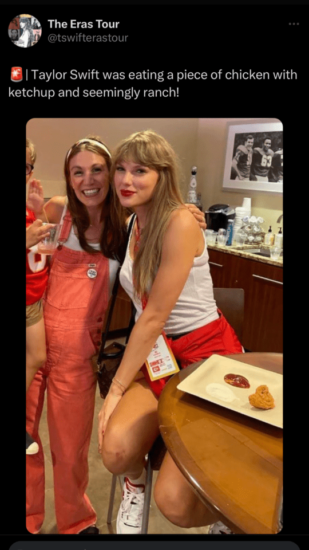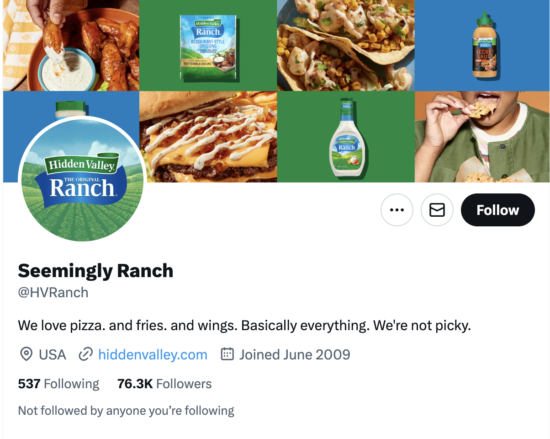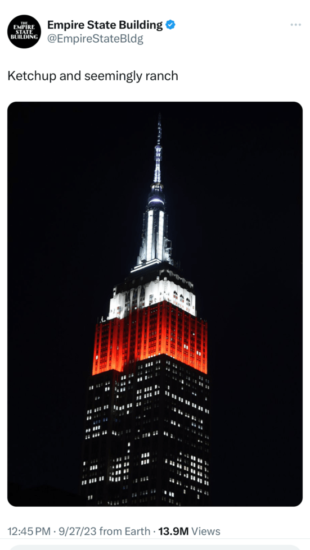
Unless you’ve been living under a rock recently, it’s more than likely you’ve seen Taylor Swift’s name in the headlines. Whether that be from articles discussing her wildly successful Eras Tour, her “Taylor’s Version” album re-releases, or the details of her personal life, Taylor Swift has been front and center in the news for the better part of a decade. As media professionals, we can’t help but take a look at the buzz surrounding the popstar and wonder: what can we learn from the cultural phenomenon that is Taylor Swift’s empire?
Taylor Swift’s image and brand in the media
Taylor Swift is a long-established figure in the media, with a career in the public eye dating back well over 13 years. Throughout her career, she has managed to remain true to her personal brand while navigating the ups and downs of being in the limelight, even when faced with harsh backlash and personal attacks from critics and the public.
In 2016, Swift’s public persona took a big hit when she found herself in an argument with Kim Kardashian, who is also a savvy media strategist (for better or for worse) in her own right. If you’re unfamiliar with the situation, Swift and Kardashian found themselves at odds over a lyric in Kayne West’s song “Famous”. Thus began a downward spiral of Swift’s image in the media.
A year after the “Famous” fiasco occurred, Swift was ready to get back in the game. A social media blackout accompanied the announcement of her 2017 album “Reputation”, which was heavily branded with snakes and other imagery related to the public argument between herself and the Kardashian clan. Swift adapted to the public’s changing perception of her and came back with an album that Rolling Stone described as her “most intimate” album yet, as well as a cohesively branded social media strategy that the world remembers to this day. The following year, Swift’s “Reputation Stadium Tour garnered mass public support as she sold out stadiums across the globe.
Never mind that a few years later in 2020, the full clip of the infamous phone call between Swift and West was released, clearing Swift from any wrongdoing as it became evident that West never revealed the full song lyric to her as Kardashian had claimed. By that point, it didn’t matter — she had made a comeback entirely on her own, releasing both the “Reputation” and “Lover” albums which were critically acclaimed and and strongly admired by the public.
How did she do it? To understand Swift’s media persona, we have to examine her audience, a dedicated fan-base widely known as “Swifties.”
Establishing a loyal audience
Throughout her career, Swift has garnered the support of a loyal, unwavering audience who call themselves “Swifties”. Taylor Swift’s unique bond with her Swiftie fandom has revolutionized fan engagement in the digital era, increasing her media presence throughout her career. Through the clever use of cryptic “easter eggs” and teasers, she has turned her album releases into media events, driving anticipation and speculation. Hosting exclusive “secret sessions” and showering fans with personalized gifts and interactions on social media, Swift has fostered a deep connection with her fans turning them into devoted brand advocates. This rapport not only sustains her media visibility but also cements her status as a media-savvy marketer, continually riding the wave of success with the support of her dedicated fanbase.
In a media landscape often marked by distance between artists and their audiences, Taylor Swift’s interactions with her fans stand out as a form of authenticity. This connection has redefined the role of artists in the media, positioning her not just as a pop sensation but as a relatable figure that fans feel connected to. Her fans are not just passive consumers but active participants in her journey, enthusiastically amplifying her message and contributing significantly to her continued media prominence and success.
An unlikely combo: Taylor Swift, the NFL, & “seemingly ranch”
Recently, Swift has made headlines because of her public appearances with Kansas City Chiefs tight end Travis Kelce. Maybe they’re linked romantically, but what’s notable is the boost in NFL ticket sales following Swift’s presence at a Chiefs game a few weeks ago. After speculation that Swift would be attending a Chiefs game at Arrowhead Stadium, ticket sales for the game increased by nearly threefold. A similar situation happened at MetLife Stadium with tickets for the Chiefs-Jets game the following weekend. Kelce jersey sales also spiked nearly 400% since the pair were spotted together. Whether you want to admit it or not, Swift’s impact and dedicated fanbase reaches the far corners of every industry she comes in contact with – and right now, it’s the NFL.
More than that, brands are jumping on the Taylor Swift train as well. After she was photographed eating a singular chicken nugget with both ketchup and “seemingly ranch” (as a viral tweet from a Taylor Swift fan account referred to it), Heinz Ketchup themselves released a limited-edition ketchup-and-seemingly-ranch condiment blend. Heinz Ketchup isn’t the only brand to hop on the “seemingly ranch” bandwagon. Hidden Valley Ranch rebranded its Twitter X and Instagram profiles to “Seemingly Ranch,” and Buffalo Wild Wings used the opportunity to market its range of sauces, referring to several of its dips as “Possibly” Bleu Cheese, “Might Be” Asian Zing and “I Think This Is” Buffalo. McDonald’s featured “seemingly ranch” on their mobile app and the Empire State Building lit up in “ketchup and seemingly ranch” colors as a nod to the joke.

The original viral “ketchup and seemingly ranch” post.

Hidden Valley’s Twitter X profile is labeled as “Seemingly Ranch”.

The Empire State Building played along too, garnering almost 14 million views on its post. the “seemingly ranch” trend.
What brands can learn from “The Taylor Swift Effect”
Brands who play into trends, notice these things and capitalize on them when appropriate have the opportunity to tap into an entirely new audience, one that’s a force to be reckoned with. Sometimes, participating in trends can be inadvisable for brands, but in the case of Swift and her media empire it’s worth taking a closer look. Just look at the ticket numbers the NFL brought in, the surge in Kelce jersey sales and the products released by Heinz and similar organizations.
Taylor Swift’s impact on media and marketing extends far beyond the music industry. Brands that stay attuned to cultural trends and seize opportunities to align themselves with Swift’s phenomenon and similar occurrences can tap into a dedicated and expansive audience, experiencing the kind of success seen in the NFL ticket sales and product releases. The key takeaway here is that in today’s fast-paced media landscape, being in sync with pop culture trends and understanding their potential influence can open up new avenues for brand engagement and growth. Swift’s media empire isn’t just about music; it’s a lesson in adaptability and seizing the moment in the rapidly changing world of marketing. When brands are attuned to the power of cultural phenomena like Taylor Swift’s, they have the potential to create their own memorable moments in the ever-evolving story of media and brand collaboration.